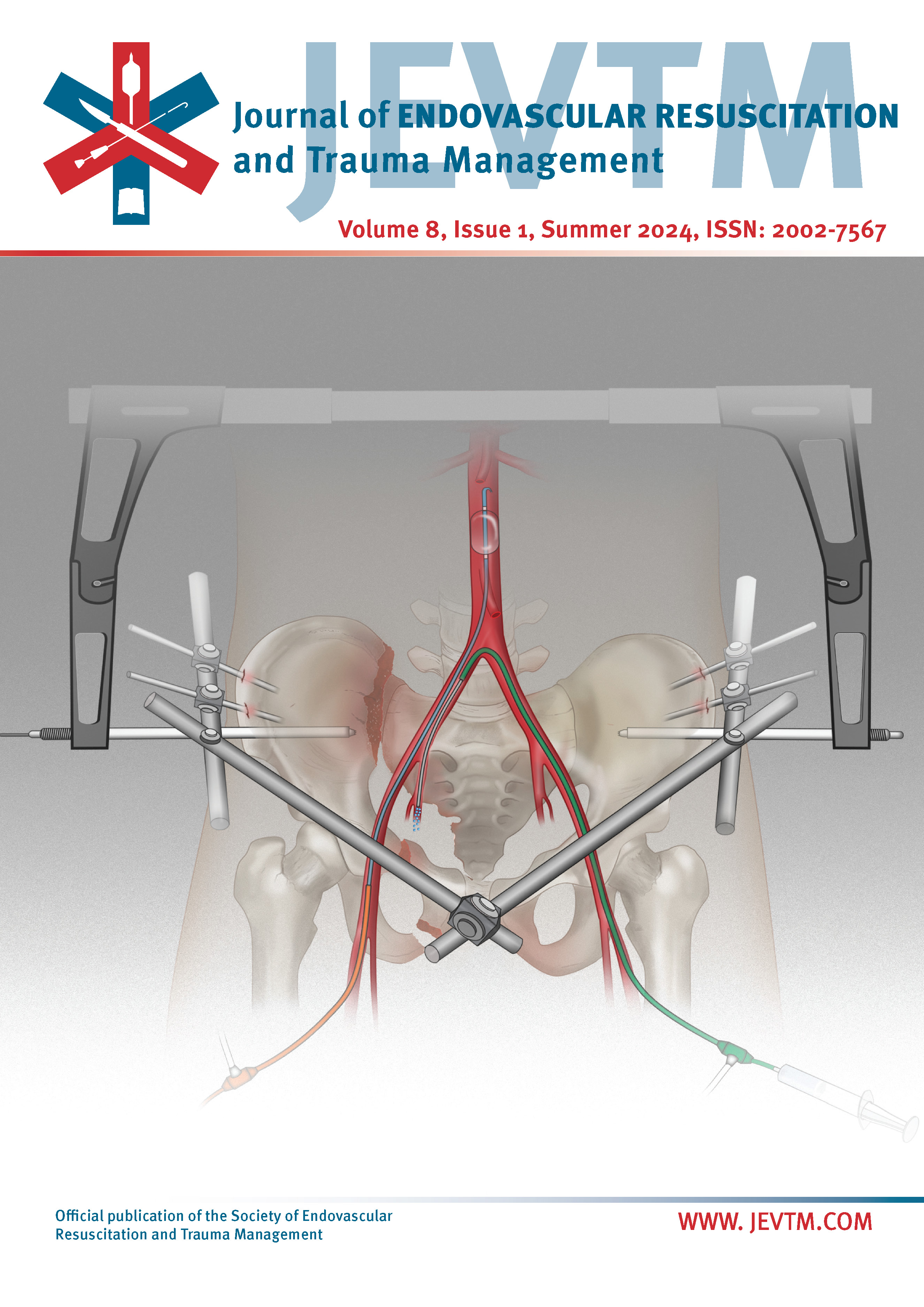Orthopedic Management of Pelvic Trauma
DOI:
https://doi.org/10.26676/jevtm.19348Keywords:
Pelvic Trauma, Hemorrhagic Shock, Pelvic Fracture, Pelvic External Fixator, Pelvic OsteosynthesisAbstract
Patients with a suspected pelvic fracture should be managed according to the principles of Advanced Trauma Life Support. The mechanism of trauma determines the pattern of pelvic lesions and the likelihood of associated injuries. The most common classification to describe pelvic lesions is the Young–Burgess system. This classification describes the radiographic images by analyzing the mechanism of injury that leads to predictable patterns of injury and displacement. It is useful in describing injuries and in helping guide both initial treatment and definitive fixation. The initial treatment in case of pelvic lesion is the application of a pelvic binder. An external fixator is recommended in hemodynamically unstable patients with unstable pelvic lesions to prevent further bleeding and to support measures of hemorrhage control. Definitive treatment of pelvic ring lesions requires anterior stabilization or a posterior fixation, or both, depending on the type of injury.
Downloads
Published
How to Cite
Issue
Section
License
Copyright (c) 2024 L De Luca, A Maurizio, Luigi Branca Vergano

This work is licensed under a Creative Commons Attribution 4.0 International License.
Authors of content published in the JEVTM retain the copyright to their works.
Articles in the JEVTM are published under the terms of a Creative Commons CC BY 4.0 license, which permits use, downloading, distribution, linking to and reproduction in any medium, provided the original work is properly cited.




